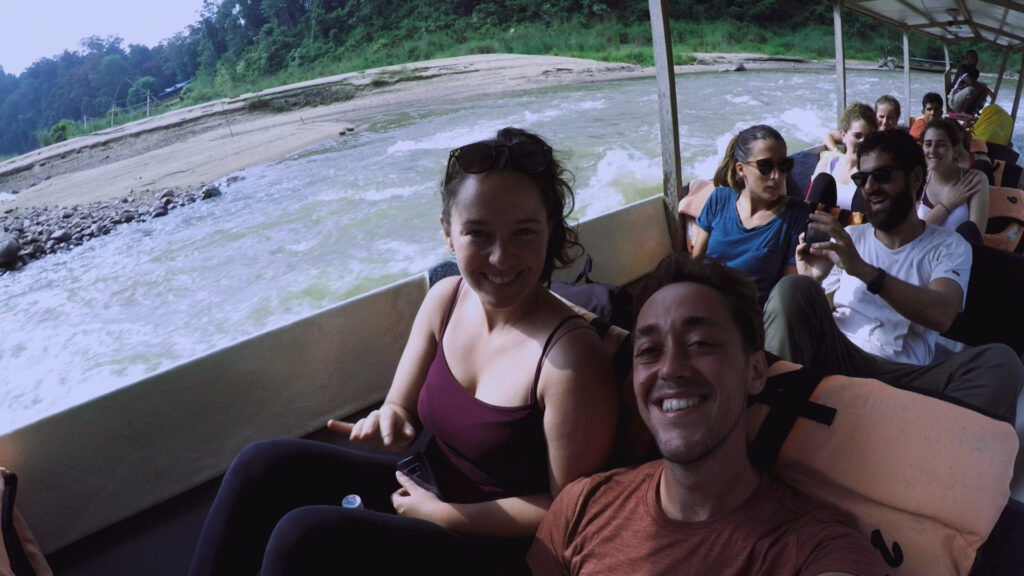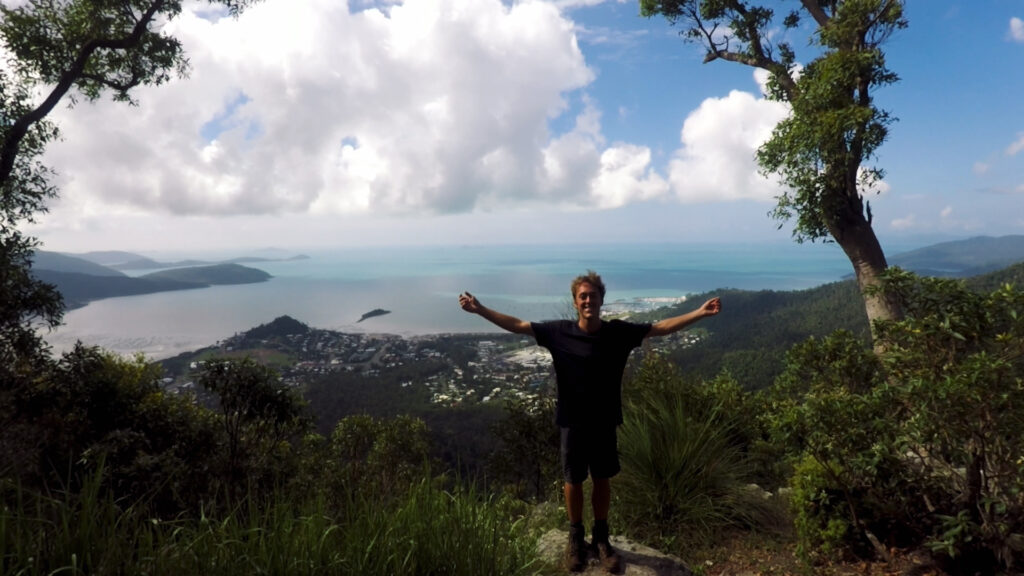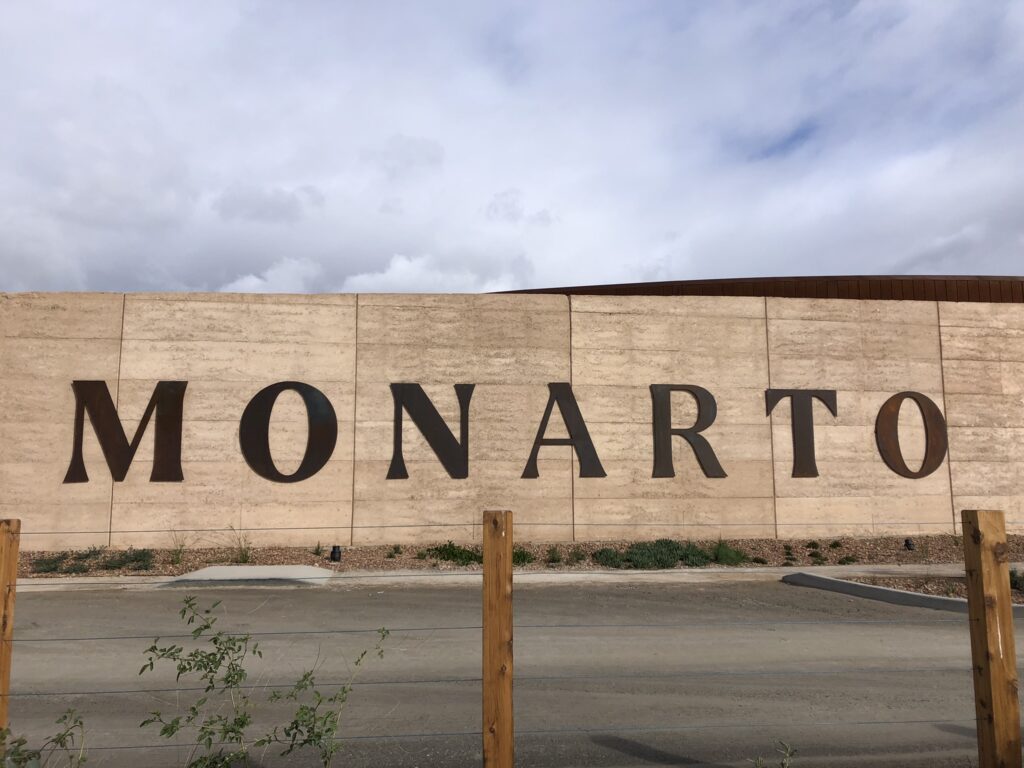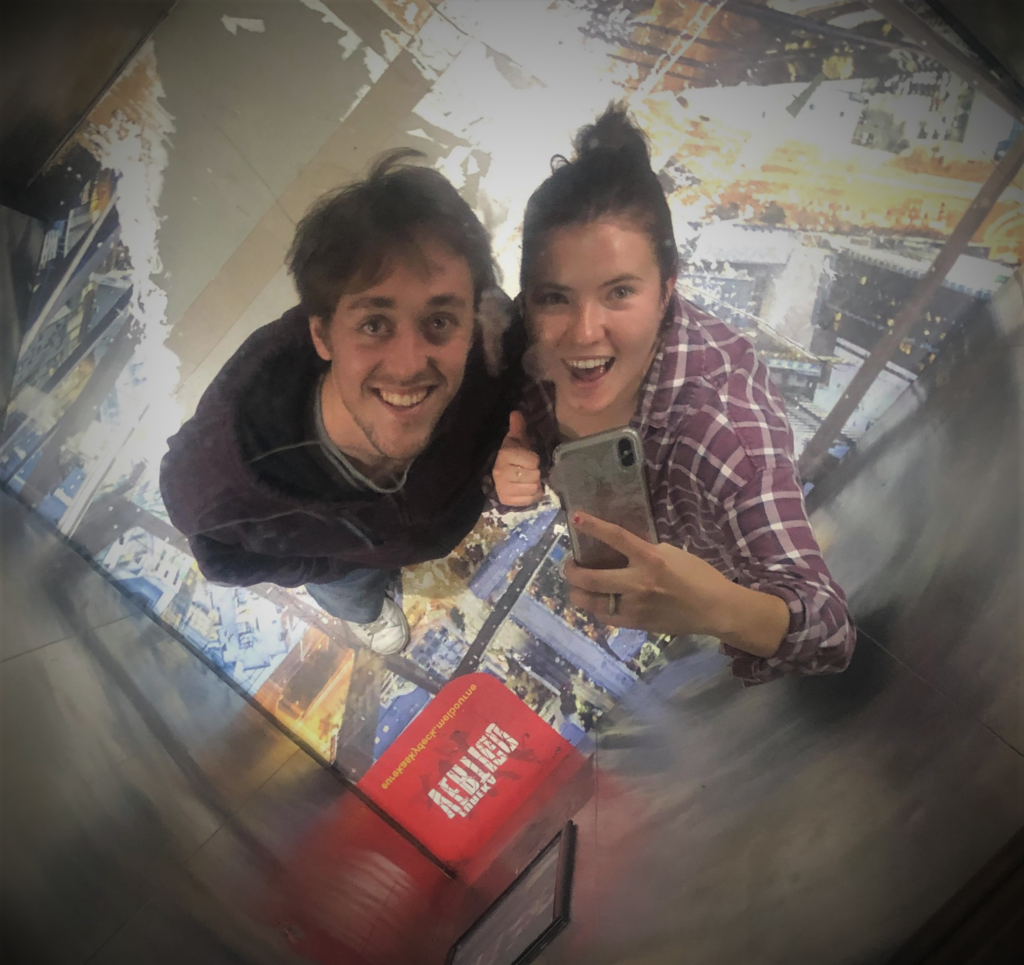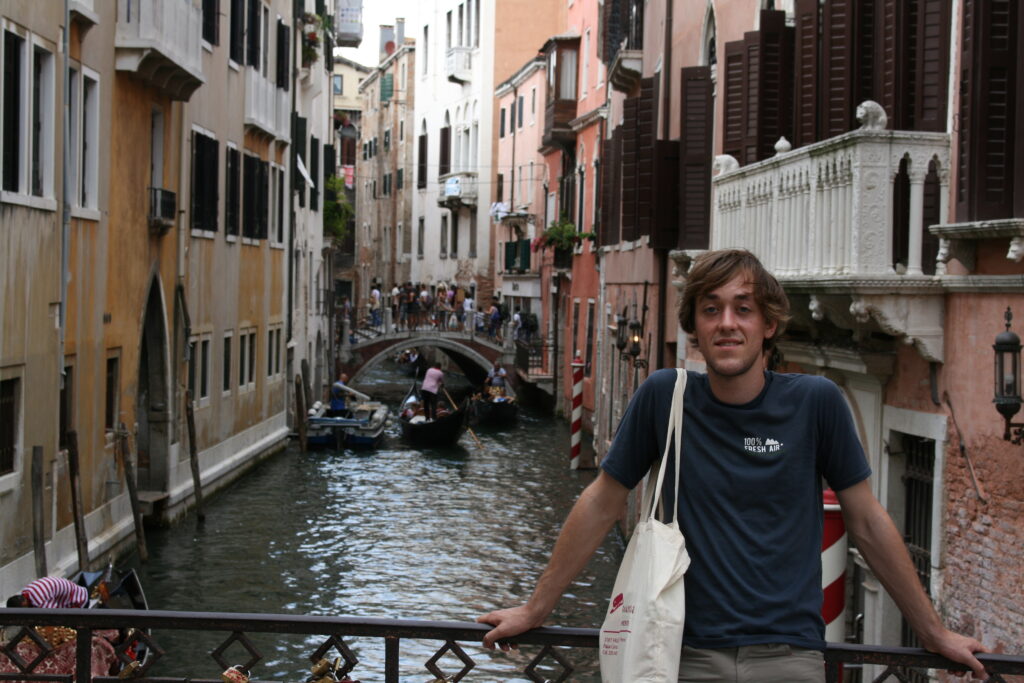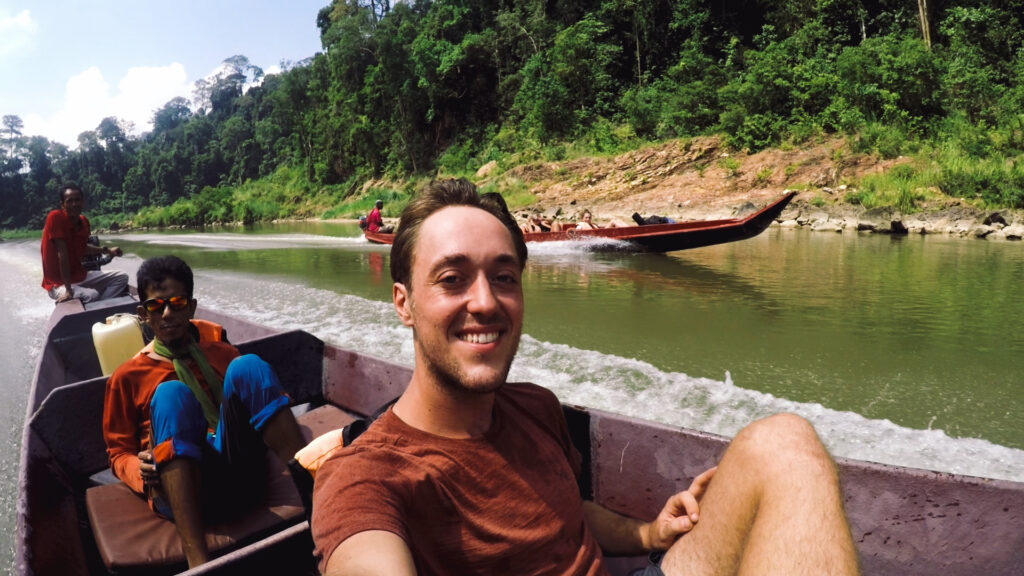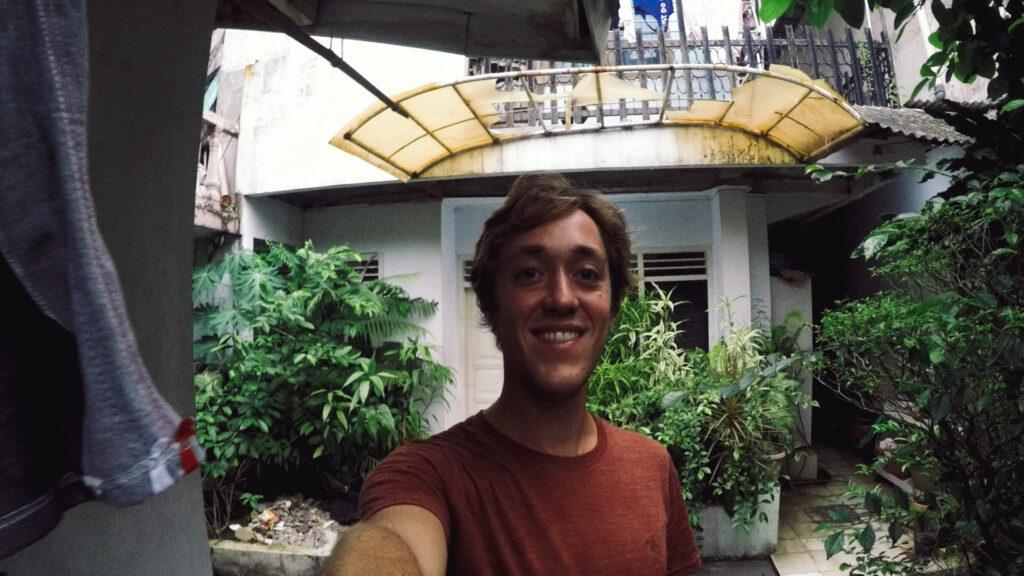Australia travel guides, travel, Travel Guides
The ultimate travel guide to exploring the Litchfield National Park.
Litchfield National Park is an extraordinary place. Just ask the locals from Darwin; they can’t get enough of the natural swimming holes and gorgeous waterfalls. Over an hour south of the Northern Territory capital of Darwin, Litchfield National Park is one of the most accessible parks and an absolute must-do for anyone travelling through Australia‘s Top End. Quickly done in one day, if you are short on time or spend a few days exploring, you can spend as much time as you like here and still always find something to do. This guide has everything you need to know about Litchfield National Park.
Please be aware that some activities/sites mentioned in the post may only be open during the dry season. Ensure you check with local parks and wildlife before seeing what sites may be closed to avoid disappointment.
We acknowledge and respect the traditional owners of the Litchfield National Park, the Koongurrukun, Mak Mak Marranunggu, Werat and Warray Aboriginal People. We pay respects to their elders, past, present and future.
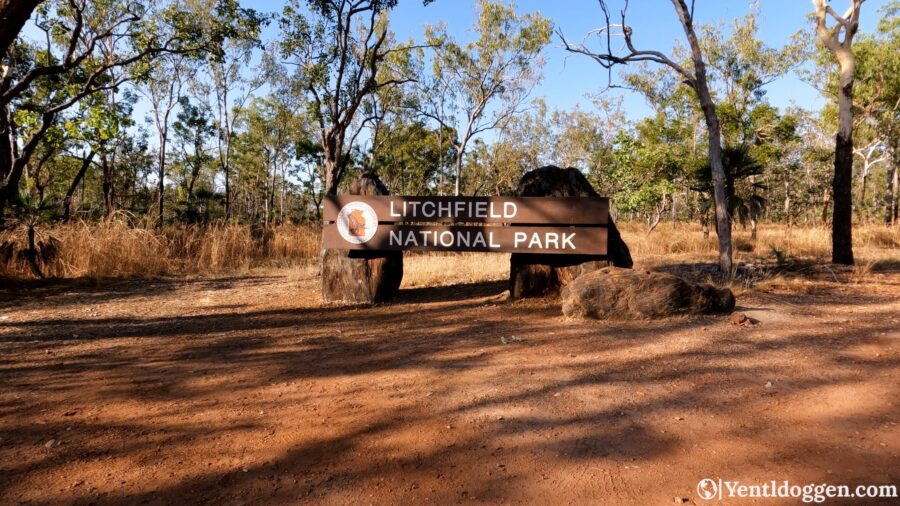
Is the Litchfield National Park worth visiting?
The short answer is yes; the Litchfield National Park is 100% worth visiting! One of the closest National Parks to Darwin, it is easily accessible, and you can see the park in one day and be back in Darwin by early evening if you plan it correctly! It has something for everyone; freshwater swimming holes, short and long hikes, incredible lookouts, tours, cultural history and a connection to the country.
How long should you spend in Litchfield National Park?
While you can see the major attractions of the Litchfield National Park in one day, we recommend at least two days (one night) to get the best experience possible. You can experience the park more deeply and appreciate the little things by taking your time. Moreover, a night camping under the stars at one of the caravan parks or park campsites is another great highlight for your trip, so make the time if you can.
Do you need a permit for the Litchfield National Park?
In short, no, you do not need a permit to enter the Litchfield National Park. You may only need to book a campsite (depending on which one) or an overnight walking trail.
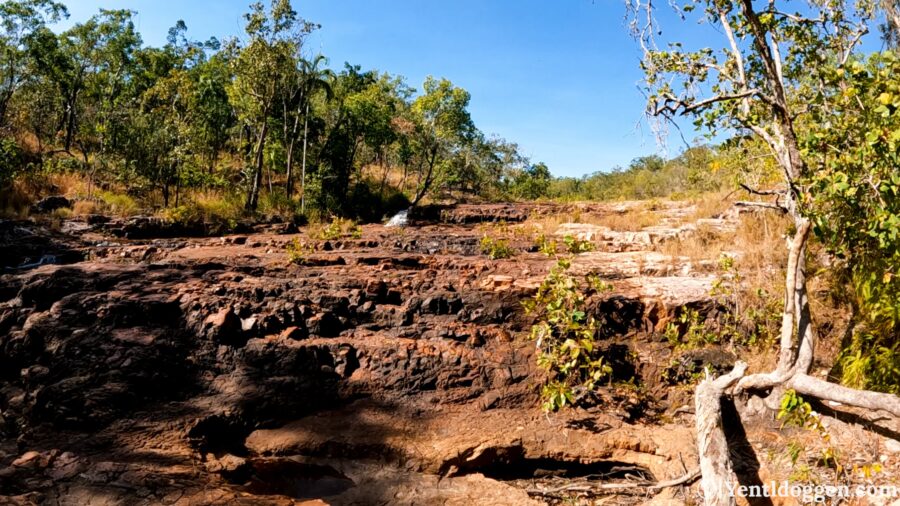
Do you need your own vehicle to explore the Litchfield National Park?
While some companies offer Litchfield NP tours, we highly recommend hiring or taking your own vehicle to explore the park. This gives you the independence to do things your way and at your own pace and ensures you get to see everything you want. Moreover, you can explore more than just Litchfield National Park; you can check out Berry Springs and Adelaide River or continue on the road to Kakadu National Park or Katherine and Katherine Gorge.
Do you need a four-wheel drive (4WD) for Litchfield National Park?
While it has benefits, it is unnecessary for most of the park. Only four sites require a 4WD to access, as they are located along the Reynolds Track. Most of the sites are accessible off the main, sealed, 2WD main road that runs through the park. Therefore, you only need a 4WD to embark down the Reynolds Track.
Best time of year to visit the Litchfield National Park:
Being situated in the Top End of the Northern Territory, Litchfield is only affected by two weather seasons: wet and dry. The wet season is characterised by hot, humid, heavy rainfall and spans the months of November to March. Visiting during the wet season has its perks, such as fewer tourists around, but it is also a hard time to travel, and due to the rainfall, much of the park can be closed. We recommend visiting during the dry season, from April to October. The dry season is characterised by dry, warm and less humid weather. However, it is still hot, so don’t expect any winter chill. Most things in the Top End are open during this period, but try to avoid peak times such as school holidays if you can!
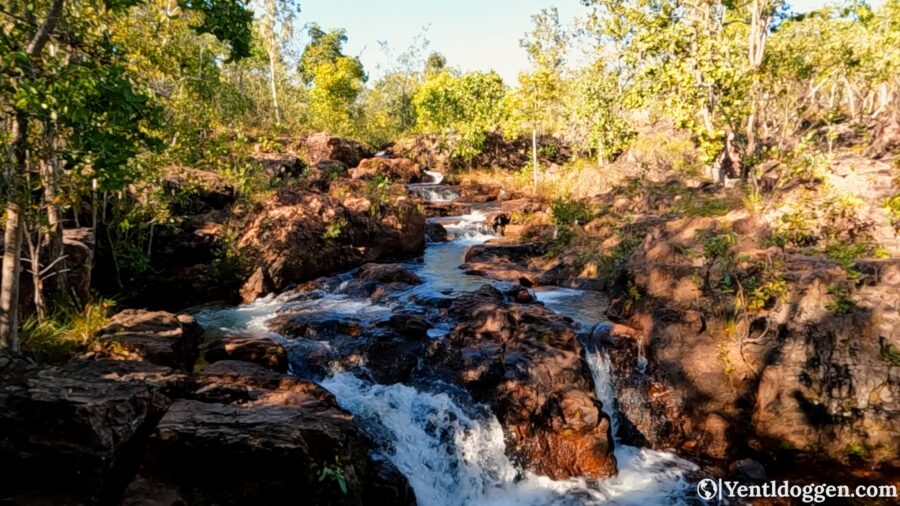
How to get to the Litchfield National Park from Darwin:
The Litchfield National Park is slightly over 100km south of Darwin and is easily reached in just over an hour’s drive. There are two main ways to get there independently; via personal vehicle or bus. Furthermore, you can also get there through a tour operator, but we recommend doing the park your way.
By car:
The quickest route to the Litchfield National Park is from Darwin via Litchfield Park Road/B30. National Highway 1 and then connecting onto Litchfield Park Road/B30 is slightly slower (by 5 minutes) but is still easy. We hired a van for our stay in the Top End, which was expensive compared to our average budget but, looking back, completely worth it.
By bus:
While getting to the park via bus (and then hitchhiking) is an option, it is not easy or necessarily recommended. The bus from Darwin, the Gx860, takes you as far as the Adelaide River, and from there, you will have to find your way into and around the park itself. It is 50km from Adelaide River to the park via National Highway 1 and B30. All considered, there are better options than taking the bus, but it is still available if you are desperate.
Where to stock up before entering the Litchfield National Park:
Bachelor is the last stop before entering the park to stock up on all the essentials. This includes fuel, food, fuel and water, so please stop here before entering the park to re-stock if you still need to. If you are leaving from Darwin, Coolalinga is the best place to stop to stock up on the way down, but it depends on what you need. We recommend refuelling at Bachelor before driving into the park, as it will save time (and money) later if you need to drive out again to fuel up.
Where to stay at the Litchfield National Park:
Staying in Litchfield National Park is a lot simpler than you would think. However, so many different options and campsites are available that it was too much to put into this post! Therefore, I had to make another one! To find out everything you need to know about staying in the Litchfield National Park, please read the camping and accommodation guide to Litchfield National Park.
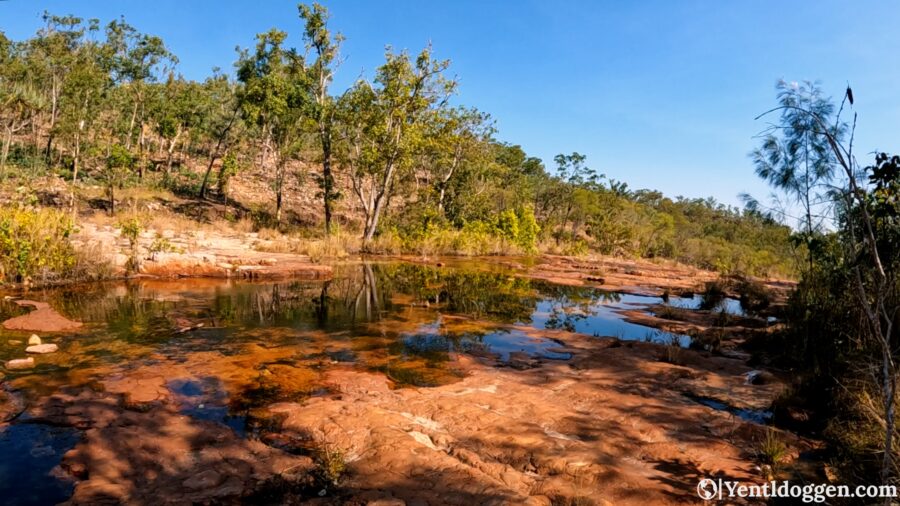
What to bring to Litchfield National Park for a day trip:
- Good walking shoes
- Camera
- Lightweight, sun-protective clothing
- Sunscreen
- Hat
- Sunglasses
- Swimmers
- Light, quick dry towel
- Swimming noodles – the best way to experience the swimming holes without the extra effort of treading water.
- Small day pack
- Plenty of water – at least 3 litres each
- Easy and ready-to-eat meals and snacks (remember to take all your rubbish with you)
- Bug spray/repellent
- Basic medical/first-aid kit
- Portable charger
What to bring to Litchfield National Park – overnight camping:
Same as above, plus
- More food and water (at least 10 L per person for overnight to include any cooking water)
- Mosquito coils
- Head-torch
- Sound quality sleep system – sleeping mat, pillow, sleeping bag
- Tent or sway (if not staying in campsite accommodation)
- Basic toiletries
Things to know before visiting the Litchfield National Park:
- Once in the park, the closest town for supplies is Bachelor; however, there is one cafe in the park at Wangi Falls.
- Be Croc-Wise. The Northern Territory is home to two crocodile species: freshwater and saltwater crocodiles. Please adhere to all swimming and no-swimming signs. Do not swim in swimming holes if closed, as they are usually closed due to crocodiles in the area. Stay away from the water’s edge in no swimming areas, and never walk back the same way close to the edge.
- Snake wise. Please do not approach any snakes you may see, especially if you do not know how to tell venomous and non-venomous snakes apart. Walk away slowly, do not run, as the vibrations will startle the snake. If, in the improbable event, you are bitten, call for help, stay calm and keep the bitten area of your body below your heart. If available, wash with warm soapy water, and cover with a clean, dry dressing. Try to remember to colour and markings of the snake to inform responders.
- If you have hired a van or car, please ensure that you have read all the terms and conditions. Some companies enforce a “sunrise sunset” clause, meaning that if you have an accident at night time, regardless of your insurance, you will be liable to pay the full fees to fix the vehicle. Thus, we advise only driving during the day, even if the clause is not on your rental agreement, as a precaution due to the large wildlife population on these roads.
- Be aware of sections of the park closing during the wet season. Due to the flooding and increased risk of crocodiles, much of the park can be closed during the wet season, so it is best to visit during the dry season to avoid this.
- Dingos can be found in the Litchfield National Park. Please do not approach them, leave young children unattended or leave food out overnight. Make sure to pack all your rubbish and food scrapes away to not attract them to your campsite.
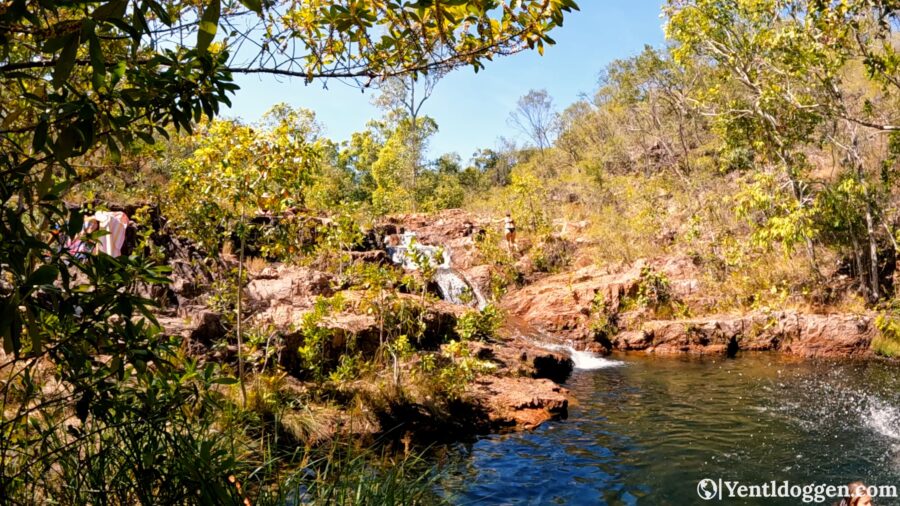
Best things to do in the Litchfield National Park:
The best thing about Litchfield National Park is its straightforward and accessible layout. The park has one main 2WD road that runs through it, with a few 4WD tracks leading off it. Therefore, you can see all the sites by driving in the same direction and stopping at different locations. As there are some 4WD tracks, I have split the things to do into 2WD and 4WD (WD stand for wheel drive; therefore, four-wheel drive is 4WD)
2WD sites of Litchfield National Park (travelling from the eastern entry of the park)
Magnetic Termite Mounds
While these might not sound interesting, they are some of the most impressive things you can see in the Litchfield National Park. Built over decades, these mounds are the fire-proof fortresses of termites. Found only in the northern parts of Australia, some of these mounds are almost 100 years old and stand well above your heads! A boardwalk will take you around some of the mounds and then to the information shelter, where you can learn more about these impressive mounds.
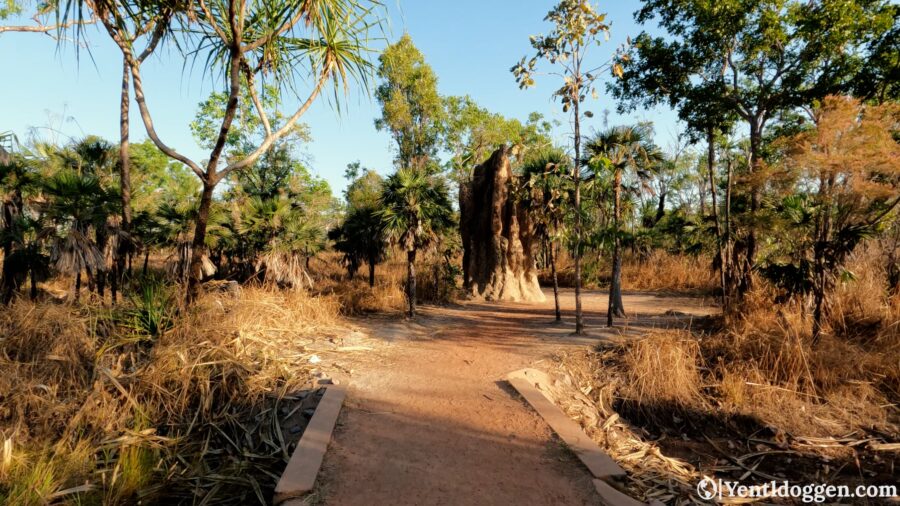
Buley Rockhole
Buley Rockhole is the first of many gorgeous freshwater swimming holes in the Litchfield National Park. Safe for swimming, the rock hole is a series of cascading rock holes/plunge pools. There is a short walk here that you can also do to Florence Falls, which is detailed below.
Florence Creek Walk
Distance: 3.2km return | Difficulty: Grade 2; easy walk.
Start at the Florence Falls Picnic area or the Buley Rockhole. Follow the path, and stop at the little side trails for a little dip or a great photo. It is best to park in the Florence Creek car park, as there is minimal parking available at the buley car park.
Florence Falls
Florence Falls is one spot where you must stop for a minute and take in the incredible natural beauty of the surroundings. 135 steps take you down from the car park to the waterfall, but no need to worry; the stairs are well worth the effort. Safe for swimming, we recommend taking a pool noodle to relax in the water with.
Tabletop Swamp
The Tabletop Swamp is the perfect bird-watching spot in Litchfield National Park. Open only during the dry season, like much of the park; there is an easy walk from the car park to the swamp. The best time to come here is either early morning or late afternoon.
The Tabletop Track
Distance: 39km | 3 to 5-day track | Difficulty: grade 3 to 4, moderate to difficult.
If you are an experienced bush hiker looking for another incredible trail, look no further than the Tabletop Track. Taking you through the heart of the Litchfield National Park, this multi-day hike will test your limits in the heat of the Top End. Some highlights of the trail include Florence Falls, Wangi Falls and Walker Creek, to name a few. You need to apply online to do this walk, and fees apply, so make sure you get in quickly to get your permit.
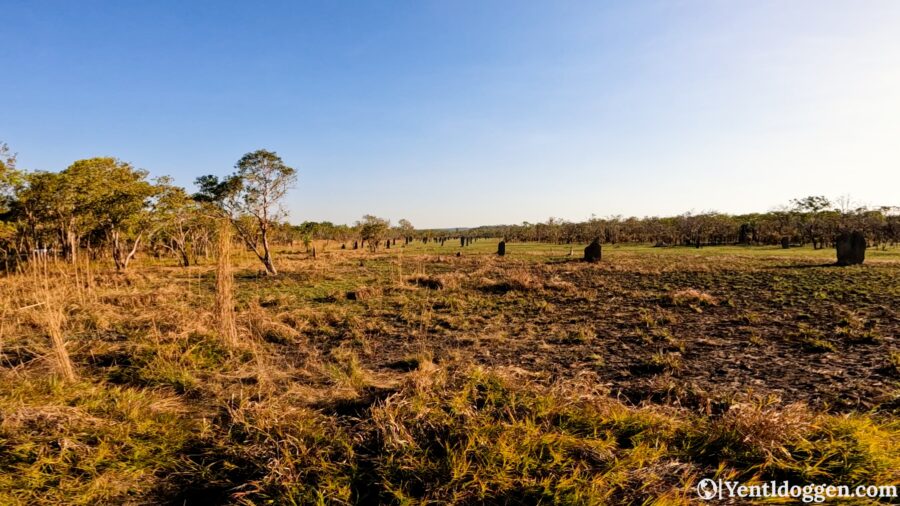
Tolmer Falls
While there is no swimming allowed at Tolmer Falls, this is the most spectacular falls in the Litchfield National Park. Cascading over two high escarpments into the plunge pool at the bottom, this is a photographer’s dream. A short walk here, detailed below, takes you to 2 viewing platforms, sandstone country and Tolmer Creek. For the best photos, we recommend the afternoon so that the sunlight shines on the waterfall.
Tolmer Creek Walk
Distance: 1.5km (loop) | Difficulty: Grade 3, moderate – rocky in parts.
Starting at the Tolmer Creek car park, the loop walk takes you to both the lookouts, through some beautiful country and back to the car park again. Allow 45 minutes.
Wangi Falls
Wangi Falls is one of the most popular swimming holes in the Litchfield National Park, so try to get here earlier in the day if you can. Not only is this another great place for swimming, but there is also a cafe, so it’s the perfect stop-over spot for lunchtime. The cafe is available from 10 am-3 pm daily, and if you are camping while in the park, there is also a campsite here that you can camp on. Furthermore, if you are looking to have a cooked lunch, there are limited gas barbeques available for use. Moreover, Tuesday nights at 7 pm (dry season), the rangers put on a Litchfield Unleashed Slideshow, where you can learn all about the extraordinary wildlife that calls the park and Northern Territory home.
Note: there is also a free wifi spot at these falls, so if you do not have reception, you can get online here.
Wangi Falls Walk
Distance: 1.6km return | Difficulty: grade 3, moderate walk; steep in sections.
Starting at the Wangi plunge pool, this walk takes you through the monsoon forest before leading up to the escarpment. No swimming is allowed above the falls. There is also a viewing platform at the base of the falls, perfect for a quick photo or two. Please check if the walk is open before heading there specifically, as the trail can be closed at the discretion of the ranges at any time.
Cascades
The Litchfield Cascades has two sections: the upper and lower cascades. Swimming is safe in both the upper and lower cascades and is accessible via the two walking tracks detailed below. We recommend walking to the upper cascades first, then swimming in each pool as you come back down, but that depends on how long you can withstand the heat!
Lower Cascades Walk
Distance: 2.6km return | Difficulty: grade 4, moderate to difficult.
Starting at the car park, follow the path and signs that lead to cascades creek. The trail is quite shady, but please remember to bring sunscreen and plenty of water. Please note that this walk is only available during the dry season, as the wet season brings flooding and an increased risk of crocodiles.
Upper Cascades Walk
Distance: 3.3km loop (dry season) 3.6km return (wet season) | Difficulty: grade 4, moderate to difficult.
This walk again starts at the Cascades car park. The loop walk, only available during the dry season, is fully exposed in some sections as it takes you onto the Tabletop Plateau. Please ensure that you take plenty of water and wear appropriate sun protection. If the heat is too much, please do not attempt the loop track; instead, take the return track via the lower cascades and walk along the creek. Consequently, you will have more shade, thus making it a more enjoyable walk.
Walker Creek
Walker Creek is best known for its eight secluded campsites along the creek bed. However, it is still an excellent spot for a short bush walk and swims. There is swimming at the creek next to the car park, at the campsites and there is a shared swimming rock pool at campsite 6. Please note that swimming is discouraged in areas occupied by campers.
Walker Creek walk
Distance: 3.5 km return | Difficulty: grade 3, moderate.
Starting at the car park, this trail takes you alongside the creek to all the campsites and swimming areas. There is a toilet between campsites 5 and 6 on the trail, so look out for those if you need to go.
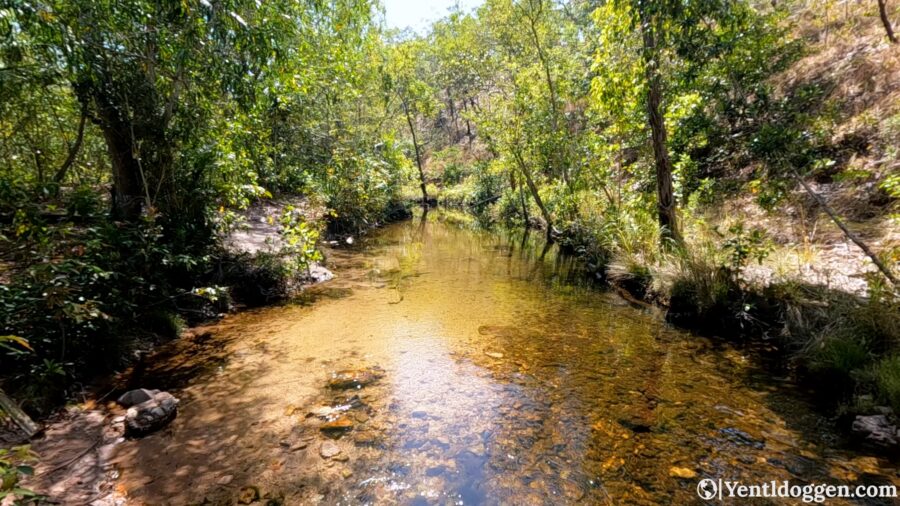
Bamboo Creek Tin Mine
The Bamboo Creek Tin Mine ruins at the park’s northern end give insight into the small-scale mining of the early 1900s. The site was established in 1906 and abandoned in 1955. As you walk around the ruins, you learn about the history and processes of the small mine and see how Litchfield National Park has a very mixed record.
4WD sites of Litchfield National Park
Lost City
You must visit the Lost City if you are travelling in a 4WD. The Lost City is a series of towering sandstone rock formations that appear like the ruins of an ancient city. The turn-off for the lost city is between Tolmer Falls and Buley Rockhole. While it is only a 10km track, it can be a challenging drive, depending on the time of year. During the wet season, the path can become completely impassable, so please check to see if it is open before setting off. No camping is allowed in the Lost City.
Blyth Homestead Ruins
The Blyth Homestead has a rich Australian bush history and is not to be missed while travelling through Litchfield National Park. Built in 1928 by Harry Sargent, his wife Alma and their family of 14 children, the Blyth Homestead offers insight into another past use of the park; cattle grazing and farming. The homestead was abandoned in the early 1960s but has been restored and now contains an interpretive display.
Tjaynera Falls (Sandy Creek)
While the name does not sound inviting, Tjaynera is much more than just a Sandy Creek. It is safe to swim here. However, as detailed below, you need to walk in from the car park. The Tjaynera Fall (Sandy Creek) is accessible via the Reynolds 4WD track, located between Tolmer and Wangi Falls. This track also gives access to the Blyth Homestead and Surprise Creek falls.
Tjaynera Falls (Sandy Creek) walk
Distance: 3.4km return | Difficulty: grade 3, moderate.
Starting at the car park, the 1.7km walk each way is well worth it once you get to the swimming hole. The trail follows the creek and the hillside of cycads and is a great short walk for anybody.
Surprise Creek
This is the superior, isolated waterfall and plunge pool experience in the park. Located halfway down Reynolds Track, a short walk awaits you from the car park through monsoonal forests to find a large pool and hidden pools above the rocks. Please note that it is only open during the dry season.
Central Valley
Central Valley is a secluded campground on the banks of the East Reynolds River. You can learn more about the Central Valley in our camping and accommodation in Litchfield National Park.
Litchfield National Park map
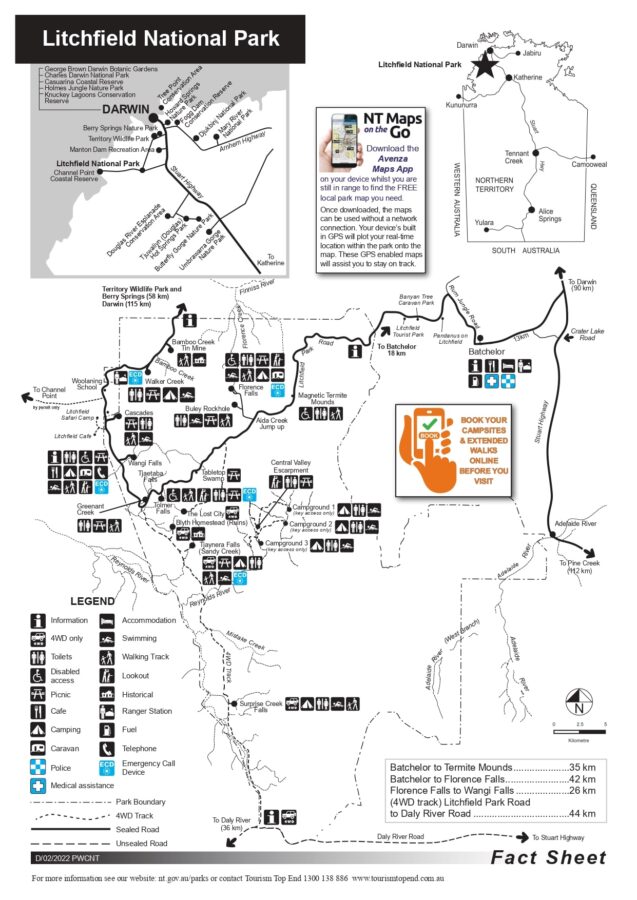
Special thank you
An exceptional thank you goes out to Ella at the Darwin Tourist Information centre for all her help with our Northern Territory trip in July 2022. Ella spent at least one hour helping us find all the information we needed for our nine-day road trip through Darwin, Kakadu National Park, Katherine, the Katherine Gorge and Litchfield National Park. Not only did Ella provide us with all the up-to-date information, but she also gave us some of her own personal guides and tips, which improved the experience. Ella, if you are reading this, we cannot thank you enough for your time that afternoon, as it set us up for the adventure of a lifetime, and we cannot be more grateful for it.
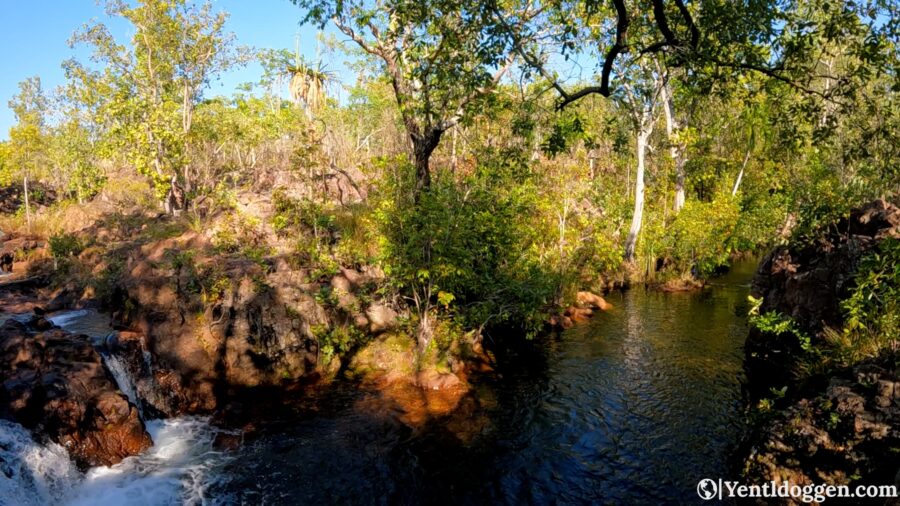
Did you enjoy this travel guide? Please let us know in the comments below! Do you want to start exploring but have questions on how to start? We are here to help with all your travel needs! For more inspiration, check out our travel blogs and vlogs or the tips & tricks section. To keep up to date with our adventures and future travel guides, follow us on Instagram and Facebook, or subscribe to our newsletter! Feel free to send us a message through the contact page! We can’t build this platform without our readers, so we thank you for your continued support. Stay tuned for many more adventures to come!



